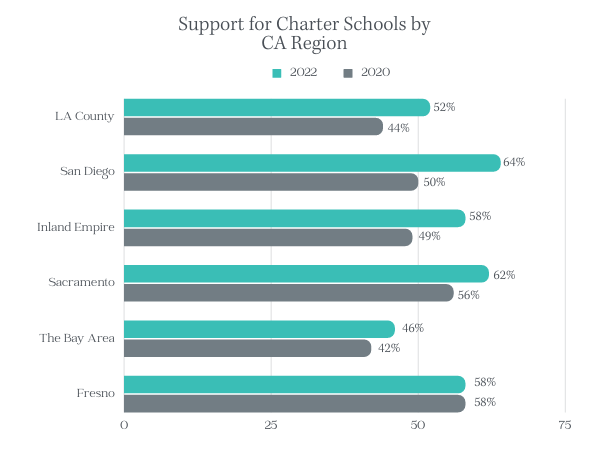The COVID-19 pandemic has changed everything, especially the way we think about school. And while educators have been asking important questions about how to measure school success, they are asking these questions with more urgency as they face enrollment, budget, and logistical challenges in late-pandemic times.
Karega Rausch, the president and CEO of the National Association of Charter School Authorizers, is asking these questions, too. “These questions have always been at the heart of schooling,” he writes, but stresses that they are even more important to ask now that relationships between families and schools have undergone so much change due to the pandemic. NACSA strives to advance charter school authorizing to support students—especially those who have been historically underserved. In his recent article, Rausch offers 10 ways to measure successful schools post-pandemic. Let’s take a closer look at what his organization’s research has found.
- State testing in reading and math. “These tests are essential to understanding how students are recovering from the pandemic,” Rausch writes. He also argues that they help confirm that students are coming back strong after the pandemic, with particular focus on lower-income students, students with disabilities, and children of color (all of whom, Rausch says, have been disproportionately impacted by the pandemic).
- Families make great schools. Rausch believes that engaging families “must go deeper.” They should have a say, for example, in what they want and need schools to do for students, and schools should respond to those needs and wants.
- Schools should help students holistically. From staying healthy to fostering extracurricular interests, schools should be a pathway to students’ futures. Rausch calls these “rigorous measures of quality,” and gives examples such as opportunities for student leadership and mental health support.
- Cultural competency matters. “Deeply valuing family and community perspectives — especially those from marginalized groups — has another critical benefit: avoiding culturally incompetent ways of defining quality,” writes Rausch. While it’s important to teach students to interact with others of different backgrounds, schools need to be mindful of unintentional bias.
- Create customized measures of school quality. All schools are different, even if they are in the same district. Rausch argues it’s better to design measures of quality by school rather than to universally apply them. “Student outcomes will look different in different places, and a unilateral measurement may not respond to what families in that community need,” he says.
- Customized—and rigorous. Having customized measures of quality invites the possibility of lower standards, or, as Rausch puts it, “bad schools finding new ways to avoid consequences.” New measures must be robust, reviewed, and developed with many key stakeholders.
- Not every goal or initiative should be a part of a formal accountability plan. Rausch provides some frameworks for thinking about the distinction at the federal/state levels and important cautions.
- Education leaders need to think critically about how they perform and evaluate measurements. Rausch speaks about NACSA’s development work with the SUNY Charter Schools Institute and the National Charter Schools Institute. “NACSA learned it’s hard work to figure out the best sources of evidence to demonstrate progress (or not),” he writes. He believes the school or authorizer needs to design “its own valid and reliable data collection method…[and] community partners, assessment experts and cross-school collaboration can be helpful partners here.
- There must be an understanding of how measures of school quality will be used. When a school needs an intervention, it shouldn’t be a surprise to the school or the community. Designing a calendar of well-structured performance reviews and clear outcomes for the results goes a long way. “This avoids ‘gotcha’ scenarios, which force schools to spend unneeded time responding to non-performance compliance issues at the expense of teaching and learning,” Rausch says.
- Make information public and easy to understand. “Providing public access to student performance, student and staff backgrounds, performance frameworks, accountability reports, financial performance and school initiatives, for example, is best practice and something great charter school authorizers do,” Rausch believes. This can help families choose the best school for their student’s needs.
Above all, Rausch argues that what makes a school excellent needs to evolve as the educational landscape shifts. Read more from NACSA’s CEO and learn about what the organization is doing to support schools here: “10 Steps Toward Measuring Great Schools During and after the Pandemic.”

